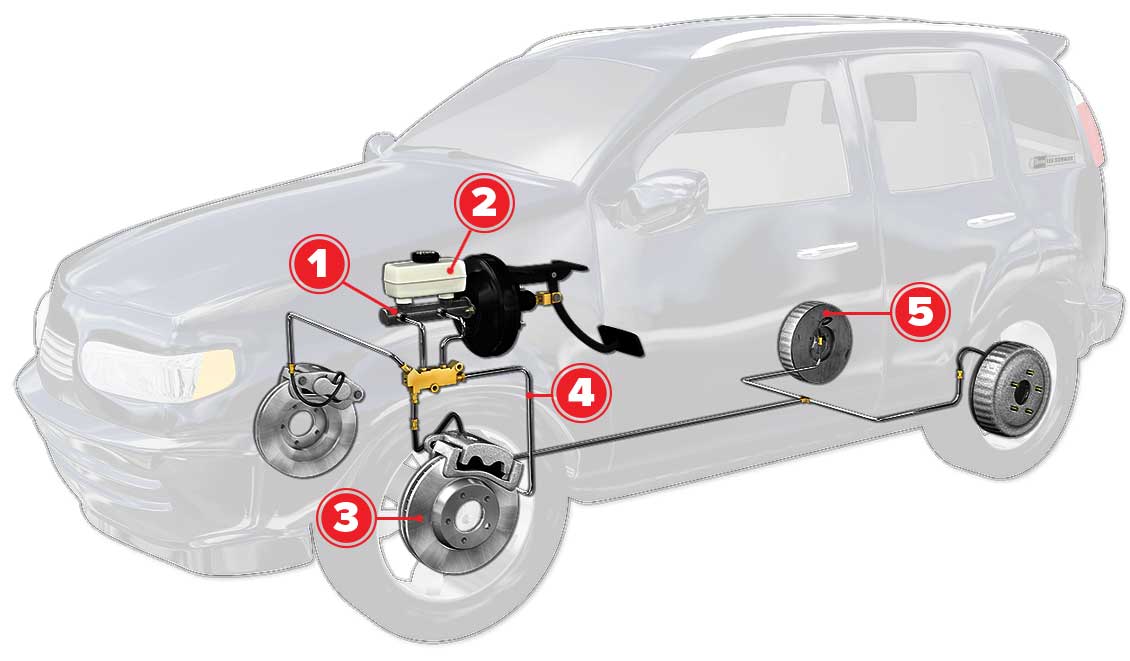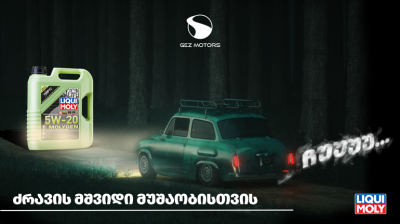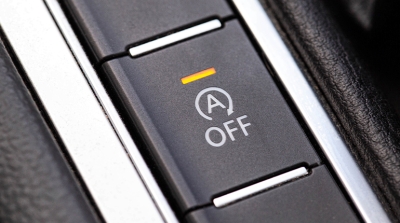
5 Brake System Types (+Signs Of Wear & Maintenance Tips)
The brake system is the most crucial safety feature in your car.
➤ The Basics Of A Car Brake System
Whether it’s a car, motorcycle, or airplane, the brake system is critical in slowing down your motor vehicle. Depending on the type of vehicle, there are many different braking systems.

○ On pressing the brake pedal, the pushrod exerts pressure on the master cylinder (which is filled with hydraulic fluid.)
○ The cylinder pistons release the fluid down the brake lines into the brake calipers, actuating the caliper pistons.
○ The caliper pistons push the brake pads against the rotor (disc brake), creating friction to slow down the motor vehicle. Likewise, in a drum brake, the brake shoes press against the brake drum.

➤ What Are The Types Of Braking Systems?
○ Hydraulic Brake System - The hydraulic brake works by transmitting hydraulic pressure throughout the braking system. Pressing the brake pedal forces the brake fluid from the master cylinder into the wheel cylinders (or brake caliper) through pipelines. The wheel cylinder piston pushes the braking material against the brake drum (drum brakes) or rotor (disc brakes) to bring the vehicle to a halt.
○ Mechanical Brake System - In the mechanical brake system, various mechanical linkages carry forward the force applied on the brake pedal through to the final brake drum. While older vehicles still use this system, it’s mainly used to power the emergency brake in modern vehicles.
○ Anti Lock Braking System - Anti lock brakes (ABS) work on pressure modulation, preventing your wheels from locking. The ABS control module diagnoses and processes information from the wheel-speed sensors, determining when to release braking pressure. So when you hit the brakes, it quickly adjusts the pressure at the wheels (15 times per second.) That’s how the anti lock braking system prevents the wheels from locking while bringing the vehicle to a comfortable stop.
○ Air Brake System - Heavy vehicles like trucks, buses, and trains use the air brake system. This braking system uses compressed air instead of hydraulic fluid. how? - When you press the air brake pedal, the brake valve pushes compressed air into the brake chambers, applying the brakes.
○ Electromagnetic Brake System - This brake system functions via frictionless braking, increasing its lifespan and reliability. An electrical current passes through the brake coils, creating an electromagnetic field. This field turns the coil into an electromagnet, which attracts the armature attached to the rotating shaft (of a wheel.) This magnetic attraction brings the rotating shaft to a quick halt.
Here are some key components and their respective functions:
➤ What is Disc brake?
○ Disc brake: The disc brake is a service brake found on the front wheels (and on all four in some modern vehicles.)
○ Brake rotor: The brake rotor is a circular disc attached to the wheel hub. It converts kinetic energy (motion) into heat (thermal energy.)
○ Brake pad: It comprises a steel backing plate with thick friction material. It’s bound to the side, facing the brake rotors.
○ Brake caliper: The brake caliper is responsible for squeezing the brake pads against the rotor to stop the car.
➤ What is drum brake?
Older or heavy vehicles use drum brakes as foundation brakes. But you can also find them on the rear wheel of some modern vehicles.
They comprise:
○ Brake shoe: The brake shoe is a crescent-shaped component with rough friction material.
○ Brake drum: The brake drum is made from heat-conductive and wear-resistant cast iron and is an essential brake component. It pairs up with the brake shoe to create friction.
○ Wheel cylinder: The wheel cylinder (brake cylinder) is located at the top of each wheel above the brake shoes. It forces the brake shoes against the brake drum to create friction.
○ Brake pedal: The brake pedal is the part you press with your foot to activate the brake system.
○ Master cylinder: The master cylinder transmits hydraulic pressure from the brake pedal to the braking mechanism.
○ Brake line: The brake line is responsible for carrying brake fluid from the master cylinder reservoir to the wheels.
○ Brake booster: The brake booster uses an engine vacuum to amplify the force from the pressed brake pedal. It’s usually found in a hydraulic brake system.
○ Emergency brake: The emergency brake (parking brake, hand brake, or e-brake) is used to secure the vehicle from moving. On the other hand, a service brake is what you normally use to slow down or stop your vehicle.
➤ How To Maintain A Brake System?
Here are some general maintenance tips to keep your brake system safe for the road:
Avoid speeding: The faster you drive, the more you need to hit the brakes (especially within the city). As a result, the braking system components wear out earlier than usual.
Limit frequent heavy loads: Carrying heavy loads in your vehicle puts strain on your brakes, resulting in your brake pads and rotors wearing out faster.
Inspect and replace brake parts: Braking generates immense heat, impacting many brake components’ lifespan. Timely inspections and replacing necessary parts help prevent on-road mishaps and expensive repairs.
Flush your brake fluid: Brake fluid becomes contaminated with dirt and debris over time and can corrode essential brake components. It’s best to flush your brake fluid every 30,000 miles or every two years (whichever comes first.)
Here are some obvious signs that something’s wrong with your brakes:
○ The Steering Wheel Vibrates - The friction and heat from the braking process cause the brake rotors to bend over time, resulting in the brake pads pressing unevenly against the surface.
○ Brake Inefficiency - Another common sign is a stiff brake pedal or brake fade (the inability to reduce the vehicle’s speed.)
○ Odd Noises - Have you noticed screeching or squealing noises while braking? If so, it’s time to get your brake pads or brake shoes checked and replaced.
○ Brake Light Flashing - The brake light on your dashboard is a sure sign of a faulty brake system and must not be ignored.
○ Brake Overheating - The brake overheating could be due to an incorrectly installed or worn-out brake pad or a faulty braking system.
○ Air Bubbles - The modern braking system is a closed-loop system, but brake fluid is hygroscopic (prone to absorbing water from the atmosphere.) Steam from boiling brake fluid could also lead to air in the brake lines.
➤ Final Thoughts
Brake systems are integral to any vehicle and need regular care and maintenance to avoid unwanted incidents.



